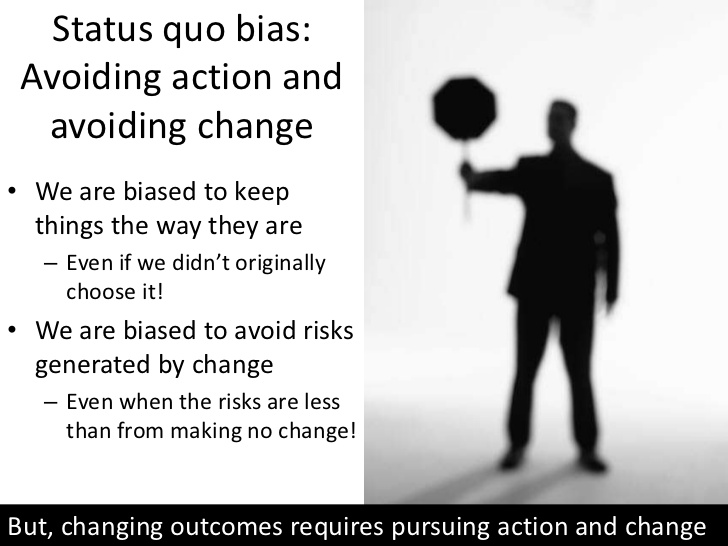Humans do not like change. It’s just how our brains are wired. We would rather see a negative outcome by sticking with a known than risk having a negative outcome by making a change.
Last week I discussed “conservatism” bias, which is the failure to adapt to new information. Conservatism bias is a cognitive error, or a processing mistake our brains make due to the use of heuristics (mental short cuts). Cognitive errors can usually be overcome by having an open mind and studying the data.
Status Quo bias, is similar to conservatism bias, but it is an emotional bias. Emotional biases are much more difficult to overcome as they are a part of our “financial DNA”. Status quo bias is the preference to keep things the same no matter what. It is a protective mechanism for many people. Studies have shown humans prefer to not risk a negative outcome by making a change even if the transaction costs are small.
Status quo bias shows up in many places in our everyday life — health care plan enrollment, 401(k) enrollment, 401(k) allocations, school choices, auto insurance providers. Most people would rather stay with the “known” than risk making any changes.
One person that does not appear to have any status quo bias in his DNA is President Trump. Unfortunately, he is running up against so many obstacles because the vast majority of Americans are subject to status quo bias. The leadership in both parties do not like changes and have taken advantage of that to stick with the same ideological stances for the past 40 years despite evidence that we have major STRUCTURAL issues that must be changed or our country risks losing all of our competitive advantages. On a much broader scale than our decision to move to TCA, if you were to make a list of everything that is wrong with our economy and future growth potential it SCREAMS we must change. Like those advisors that see the solutions, the leadership in both parties has decided to roll the dice on the status quo.
For more on status quo bias, check out this slide presentation from Professor Russell James at Texas Tech University.





